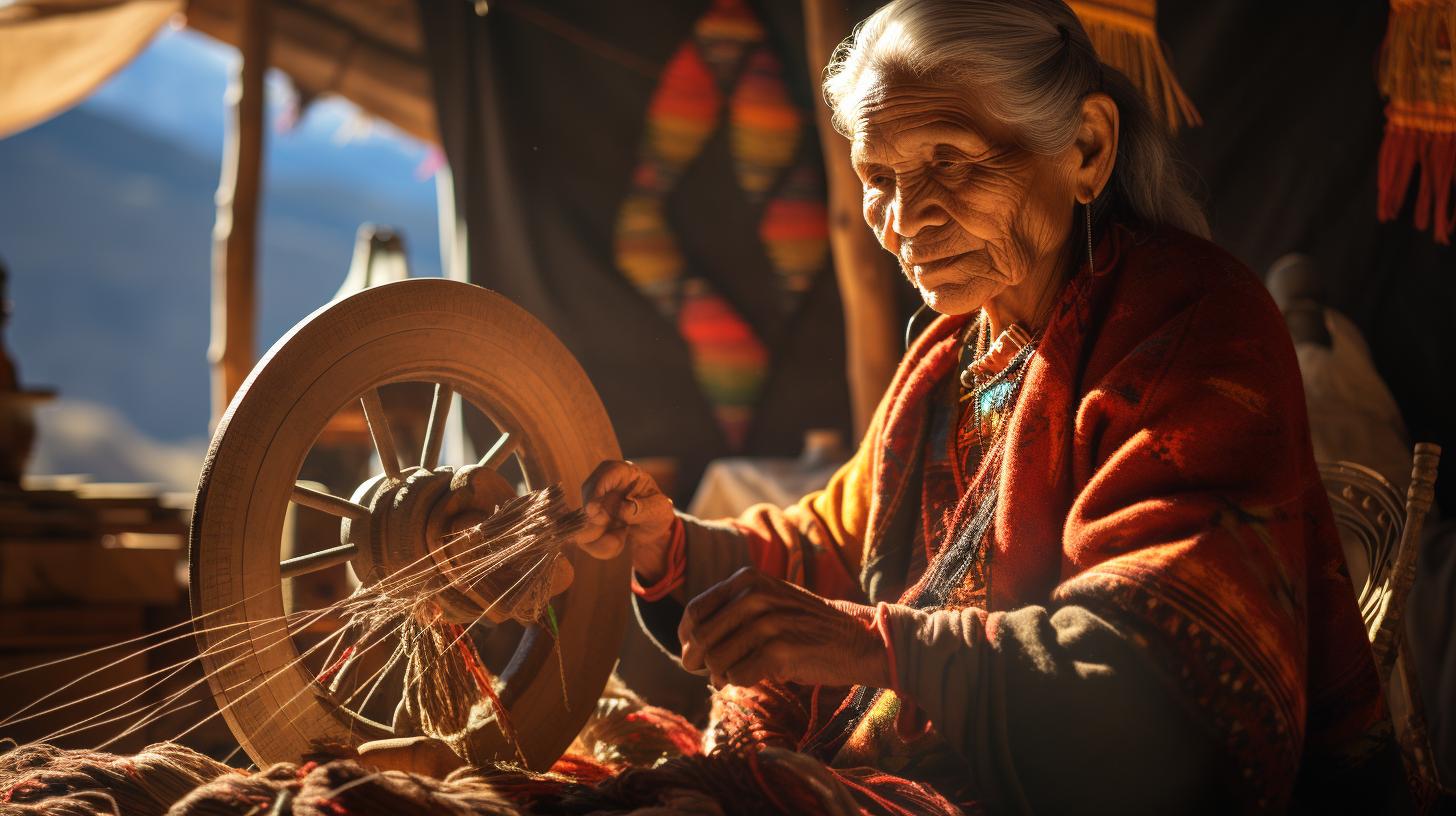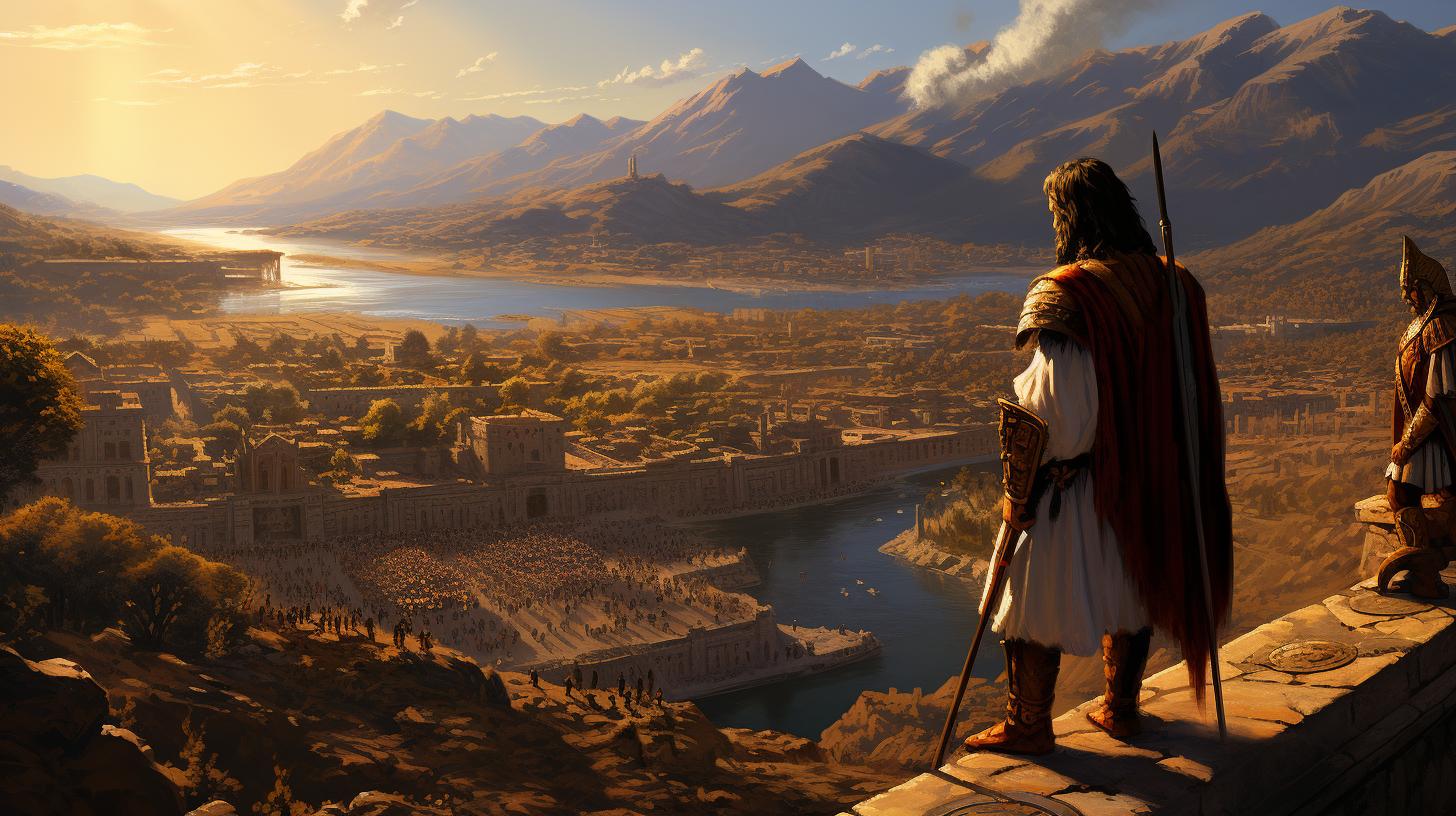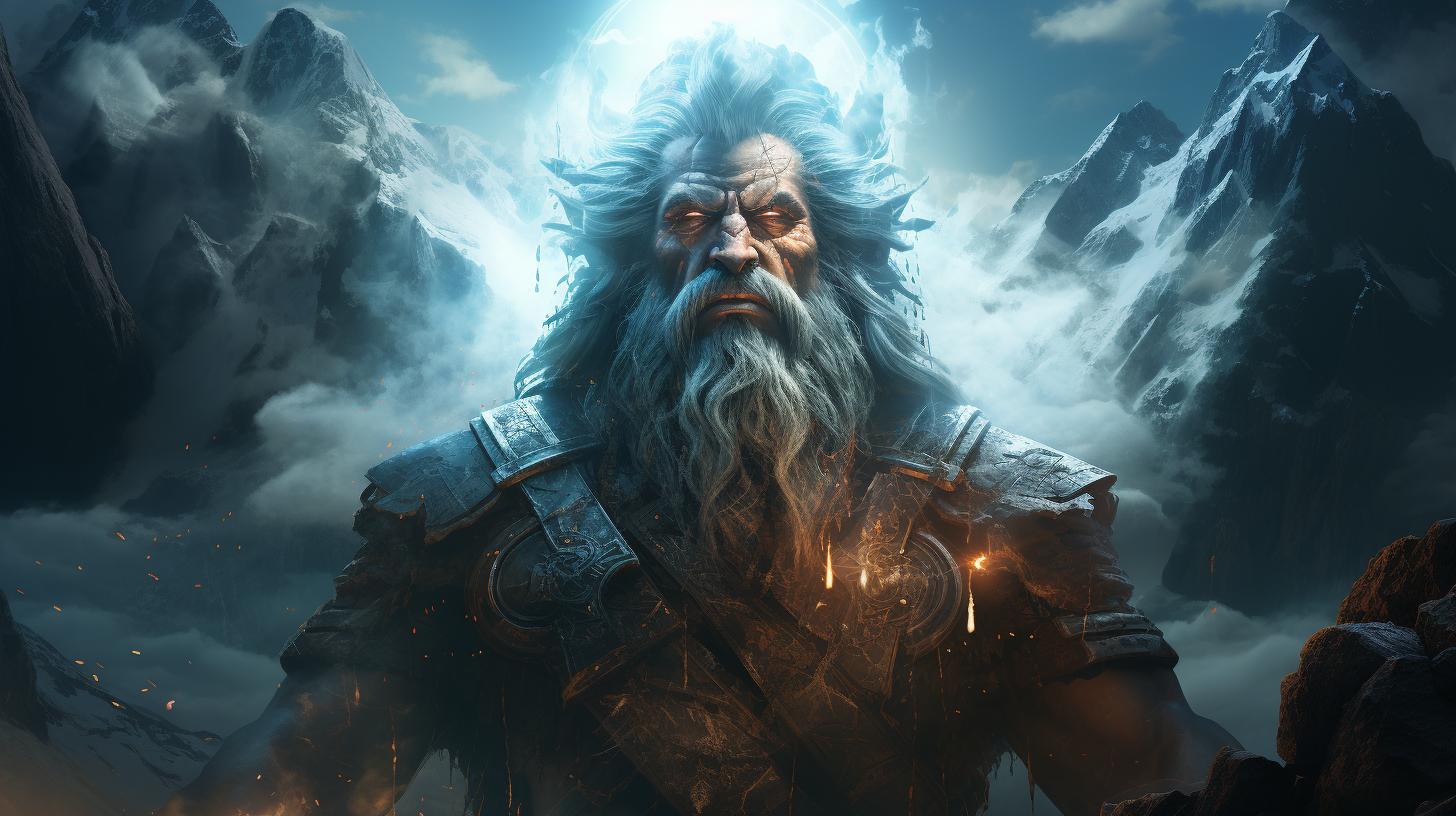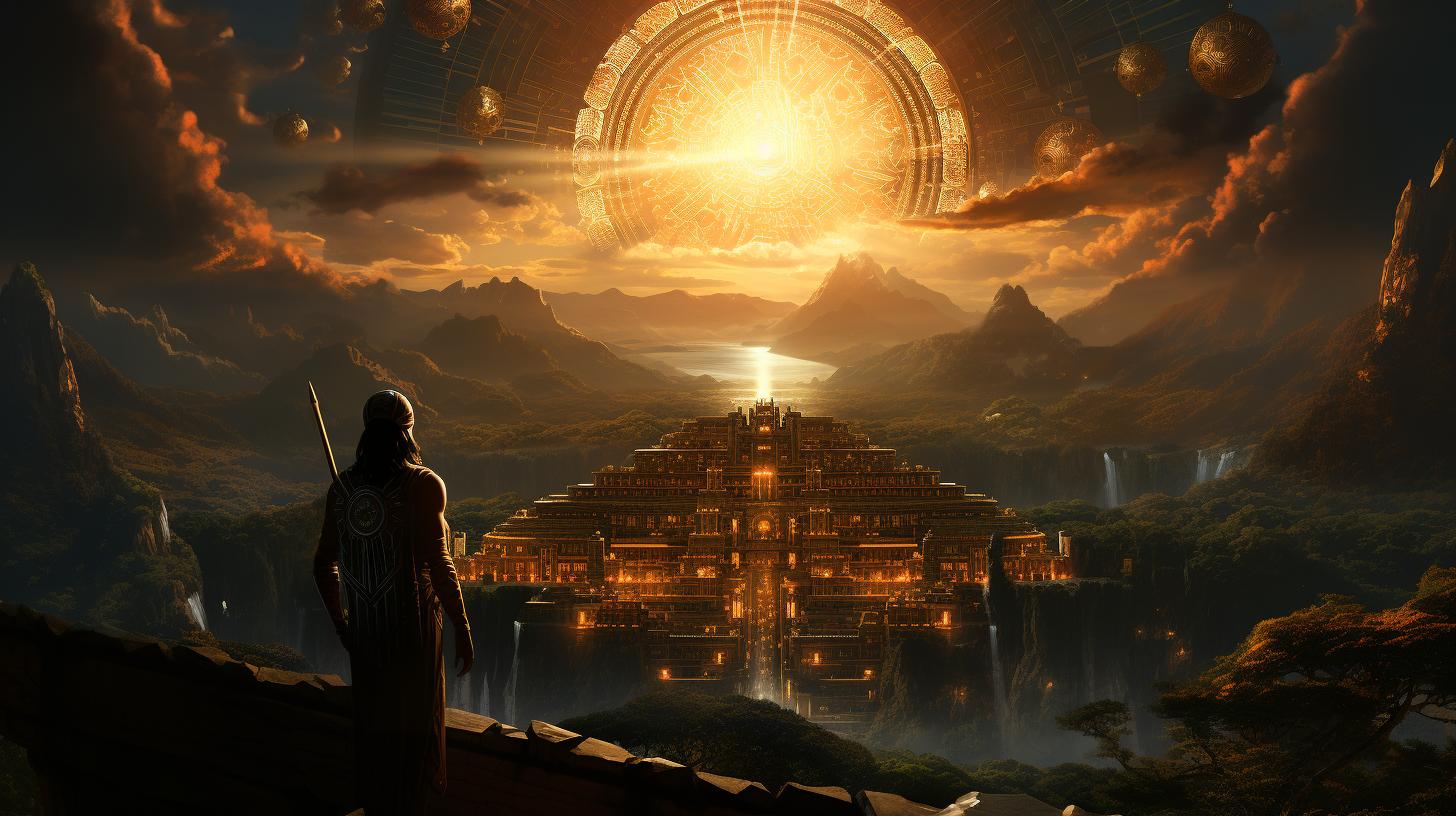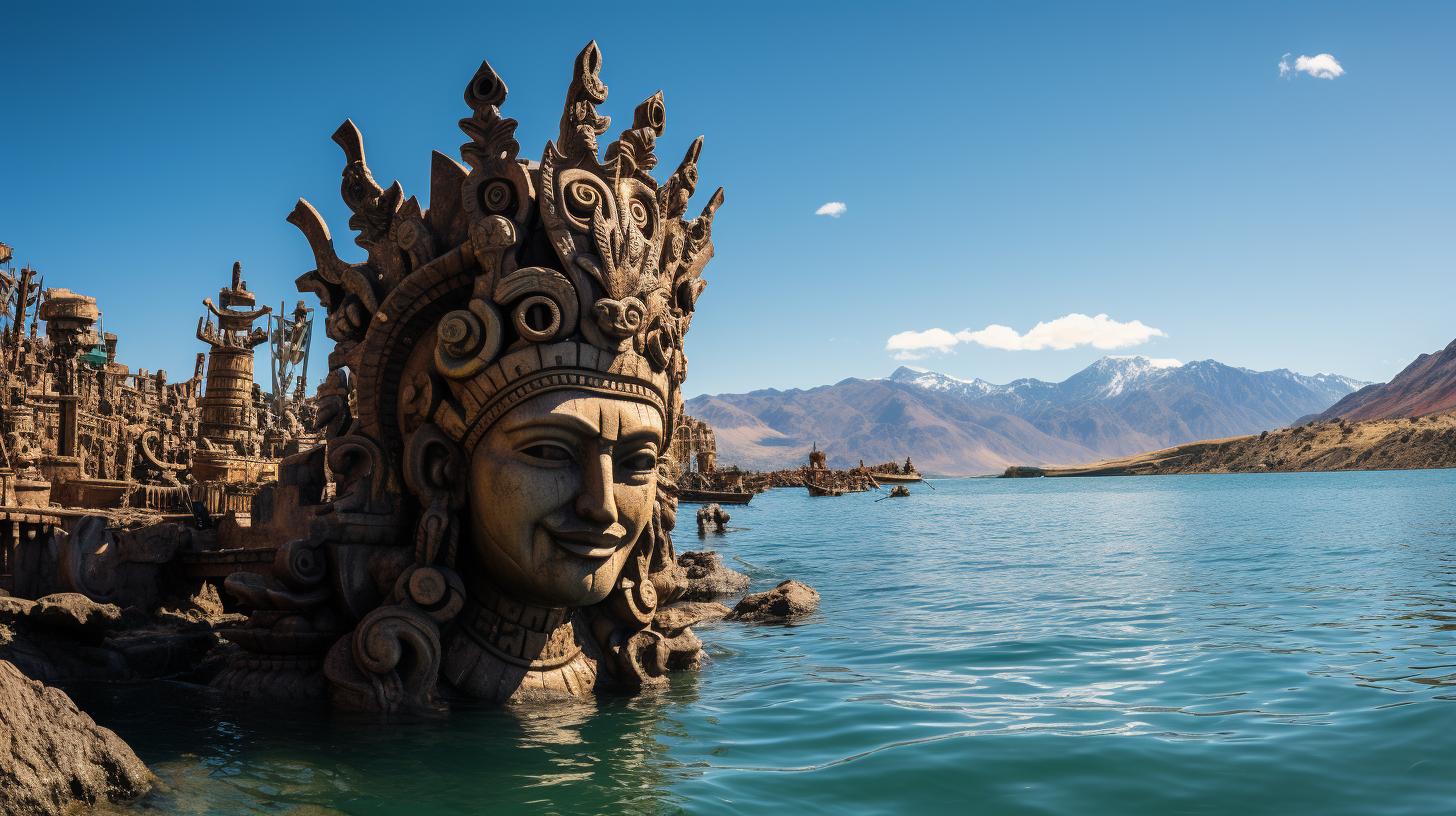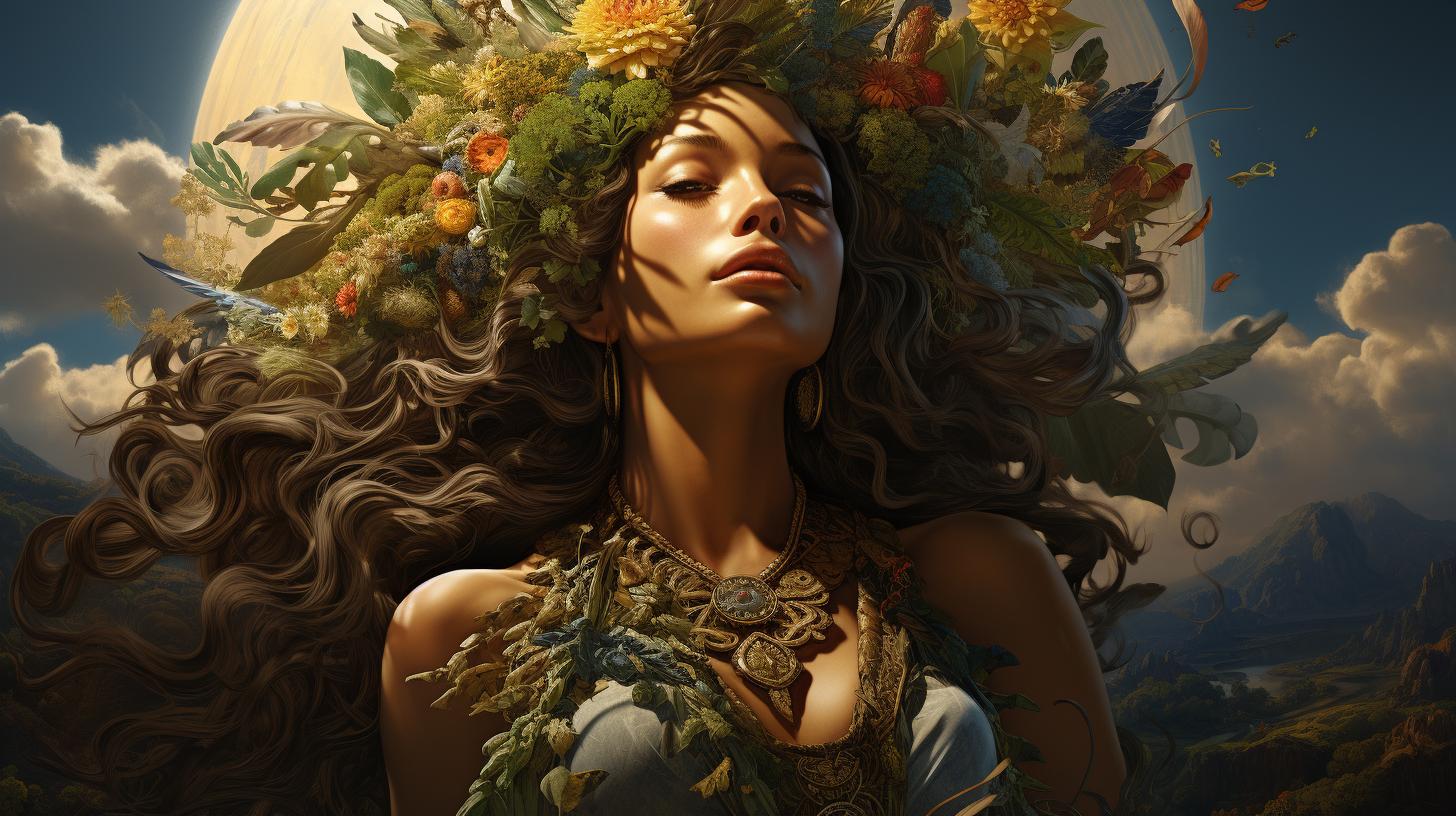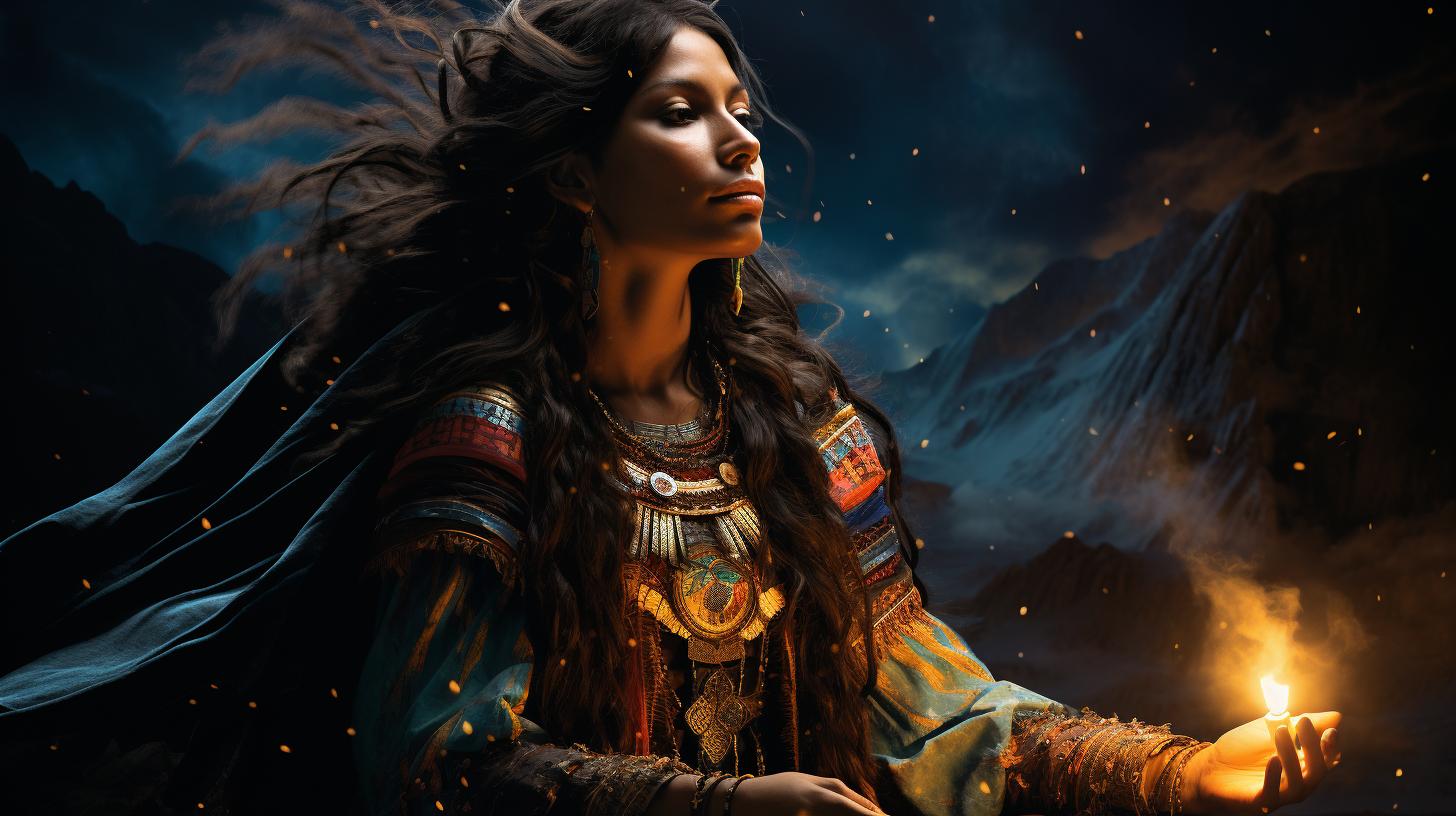Catequil Inca God: Unveiling the Mythology and Power of the Inca Deity

Catequil Inca God holds a significant place in Inca mythology, particularly associated with thunder and lightning. This deity’s complex relationship with Ataguchu adds to the intrigue. Alongside other revered Inca gods like Mama Allpa, Viracocha, and Inti, Catequil’s importance extended beyond mere mythology.
Inca warriors hailed him as their patron deity, while his role in agriculture influenced crop cycles. Through this article, we delve into the depths of Inca myth and religion with a focus on Catequil.
Catequil Inca God: Exploring the Mythology and Power
Welcome to the fascinating world of Catequil Inca God, where we dive deep into the rich mythology and immense power surrounding this extraordinary deity. Within the Inca belief system and cosmology, Catequil holds a prominent role as the god of thunder and lightning, wielding immense control over the forces of nature.
Let us embark on a journey to uncover the deeper layers of this revered figure and explore the captivating aspects that define the mythology and power of Catequil.
The Inca Beliefs and Cosmology
At the core of Inca culture lies a profound belief system intertwined with a complex cosmology.
The Inca people held a deep reverence for nature and believed that everything in the universe was interconnected. Their cosmology emphasized the harmony between the spiritual and physical realms, with deities playing crucial roles in maintaining this delicate balance.
Catequil: The Inca God of Thunder and Lightning
Enter Catequil, the formidable Inca god associated with thunder and lightning. Revered for his ability to control the powerful forces of nature, Catequil held a position of great importance within the Inca pantheon.
Through the resounding thunder and dazzling lightning strikes, Catequil showcased his magnificent power to humanity, leaving both awe and reverence in his wake.
Ataguchu: The Complex Relationship with Catequil
In the realm of Inca mythology, a complex relationship between Catequil and Ataguchu emerges. In some traditions, Ataguchu is believed to be a separate deity, while in others, it is believed that Ataguchu is simply a guise or disguise of Catequil.
The intricate dynamics between these two entities add depth and intrigue to their mythological narrative, highlighting the multifaceted nature of the Inca belief system.
Other Inca Gods and Deities
Beyond Catequil and Ataguchu, the Inca pantheon boasts a constellation of gods and goddesses, each with their unique powers and domains. Mama Allpa, Urquchillay, Viracocha, Kon, Inti, Chakana, Mama Killa, Mama Sara, Pachamama, Supay, and Illapa are just a few of the prominent deities that coexist within the rich tapestry of Inca mythology, each contributing to the intricate spiritual framework of the civilization.
The Worship and Importance of Catequil
Within Inca society, the worship of Catequil held significant weight, particularly among warriors who carried images of the god into battle, seeking his protection and favor. Additionally, Catequil served as an esteemed oracle, possessing the ability to predict the future and guide the Inca people in crucial decisions.
The worship and reverence bestowed upon Catequil exemplify his pivotal role in shaping Inca society and their perception of the divine.
Catequil in Inca Art and Symbolism
The influence of Catequil permeated the realms of Inca art and symbolism. Various depictions and representations of the god can be found, showcasing his association with thunderous storms and dazzling lightning bolts.
The vibrant color palette of the Inca civilization, along with intricate patterns and designs, captured the essence of Catequil’s power and presence in their artistic expressions.
The Role of Catequil in Inca Society
Catequil, the enigmatic Inca god, played a vital role in various aspects of Inca society.
From divination to warfare and agriculture, Catequil’s influence permeated the fabric of everyday life. This section explores the multifaceted role of Catequil, shedding light on the significance attributed to this revered deity.
Catequil as an Oracle: Predicting the Future
Catequil, revered as an oracle, possessed the power to foresee the future. Inca priests sought divine guidance by invoking Catequil’s wisdom. Through sacred rituals and ceremonies, they would decipher Catequil’s messages, providing insights into forthcoming events and advising on important decisions.
The Inca people held Catequil’s prophecies in high regard, relying on his predictions to navigate their lives.
Catequil and Warfare: The Warriors’ Patron Deity
Warriors in the Inca society regarded Catequil as their patron deity. Prior to battle, they carried images of Catequil, seeking his protection and blessings. It was believed that Catequil’s formidable power would aid them in conquering their enemies.
With Catequil’s divine presence, warriors fought with valor and conviction, viewing their victories as manifestations of the god’s might.
Catequil and Agriculture: The Influence on Crop Cycles
Catequil’s dominion over thunder and lightning held significant implications for agriculture. The Inca people relied on favorable weather conditions for successful crop yields, and Catequil played a crucial role in ensuring agricultural prosperity.
It was believed that Catequil’s thunderous roars and lightning strikes brought nourishing rains, vital for the growth and sustenance of crops. Farmers recognized the god’s influence and carried out rituals to appease Catequil, seeking his continued benevolence.
Catequil’s Connection to Natural Phenomena
Catequil’s association with thunder and lightning extended beyond agriculture. The Inca people attributed natural phenomena such as storms and celestial displays to the deity’s influence. The thunderstorms and lightning strikes were seen as Catequil’s powerful manifestations, reminding the Inca of his formidable presence and potential wrath.
These awe-inspiring displays of nature were both respected and feared, serving as a constant reminder of Catequil’s dominion.
Catequil’s Role in Inca Rituals and Ceremonies
In Inca rituals and ceremonies, Catequil played a prominent role. Priests and shamans invoked Catequil’s presence through elaborate ceremonies, seeking blessings, protection, and guidance. Offerings of food, drink, and elaborate trinkets were presented to show reverence to the deity.
Through these rituals, the Inca people sought to maintain a harmonious relationship with Catequil, acknowledging his vital role in their lives and society.
In conclusion, Catequil held a multifaceted role in Inca society.
As an oracle, Catequil provided glimpses into the future, guiding the Inca people through important decisions. As the patron deity of warriors, Catequil inspired bravery and triumph. In agriculture, his influence on weather patterns determined crop cycles and prosperity.
Moreover, Catequil’s connection to natural phenomena and his central role in rituals and ceremonies highlighted the deity’s significance in the spiritual and cultural fabric of the Inca civilization.
Exploring Inca Mythology and Religion
Delving into the fascinating world of Inca mythology and religion offers a unique glimpse into the spiritual beliefs and cultural heritage of this ancient civilization.
The Inca people embraced a form of spiritual belief known as Panteism, where gods and deities were revered as manifestations or spirits within every aspect of nature and existence.
Panteism: The Inca Spiritual Beliefs
In Inca spiritual belief, every natural element held divine significance, with mountains, rivers, stars, and animals considered sacred and imbued with spiritual power.
The Incas recognized and worshipped a multitude of gods, all interconnected within the complex web of Inca cosmology.
The Integration of Inca Mythology with Cosmos and Nature
Inca mythology seamlessly merged with the perception of the cosmos and the cyclic nature of agriculture. The Incas viewed the cosmos as an intricate system of interrelated entities in constant motion, influenced by the actions and interactions of celestial bodies, natural elements, and divine beings.
Legends and Tales in Inca Mythology
- Inti, the Sun God: A central figure in Inca mythology, Inti represented the life-giving force and was worshipped as the supreme deity.
- Viracocha, the Creator God: Viracocha was believed to be the creator of all things and the bringer of civilization.
- Mama Killa, the Moon Goddess: Mama Killa was venerated as the goddess of the moon, overseeing fertility and agricultural cycles.
Comparative Mythology: Inca vs. Other Cultures
Inca mythology shares similarities with other ancient cultures across the globe. Comparative studies reveal parallels between Inca gods and deities of other civilizations, offering insights into universal themes and human interpretations of the divine.
The Legacy of Inca Mythology in South America
The profound impact of Inca mythology extends beyond the borders of the ancient Inca Empire. Today, remnants of Inca beliefs and spiritual practices can still be found in modern Andean cultures, preserving the cultural heritage and spiritual connection to the mystical world envisioned by their Inca ancestors.
Frequently Asked Questions about Catequil and Inca Mythology
Who is Catequil in Inca mythology?
Catequil, in Inca mythology, is revered as the god of thunder and lightning. He holds great power over the weather and is considered a significant deity in Inca culture.
What is the significance of Catequil in Inca society?
Catequil played multiple roles in Inca society.
He was not only seen as an oracle deity who could predict the future but was also revered as the patron deity of warriors, providing them with strength and protection in battle.
Furthermore, his influence extended to agriculture, where he played a vital role in crop cycles.
How is Catequil related to Ataguchu?
There are differing beliefs regarding the relationship between Catequil and Ataguchu in Inca mythology. Some traditions depict Catequil and Ataguchu as separate deities, while others believe they are one and the same, with Ataguchu disguised as Catequil.
Which other gods are worshipped alongside Catequil in Inca culture?
The Inca pantheon consists of numerous deities. Some notable examples include Mama Allpa, Urquchillay, Viracocha, Kon, Inti, Chakana, Mama Killa, Mama Sara, Pachamama, Supay, and Illapa.
How did Inca mythology integrate with their beliefs about the cosmos and nature?
Inca mythology was deeply intertwined with their understanding of the cosmos and the cycles of nature.
They believed that the actions of gods and goddesses influenced various aspects of their lives, including agriculture, weather patterns, and cosmic events.
How does Inca mythology differ from other ancient mythologies?
Inca mythology, like many ancient mythologies, exhibits unique characteristics and stories specific to their culture. Comparisons can be drawn between Inca mythology and other mythologies worldwide to explore common themes and motifs present in human narratives throughout history.
What is the legacy of Inca mythology in South America today?
Inca mythology continues to hold significance in South American culture and folklore. The ancient beliefs and stories have passed down through generations, contributing to the rich cultural heritage of indigenous communities in the region.
For more information on Catequil, Inca mythology, and related topics, feel free to explore the comprehensive articles and resources available on our website.
.












